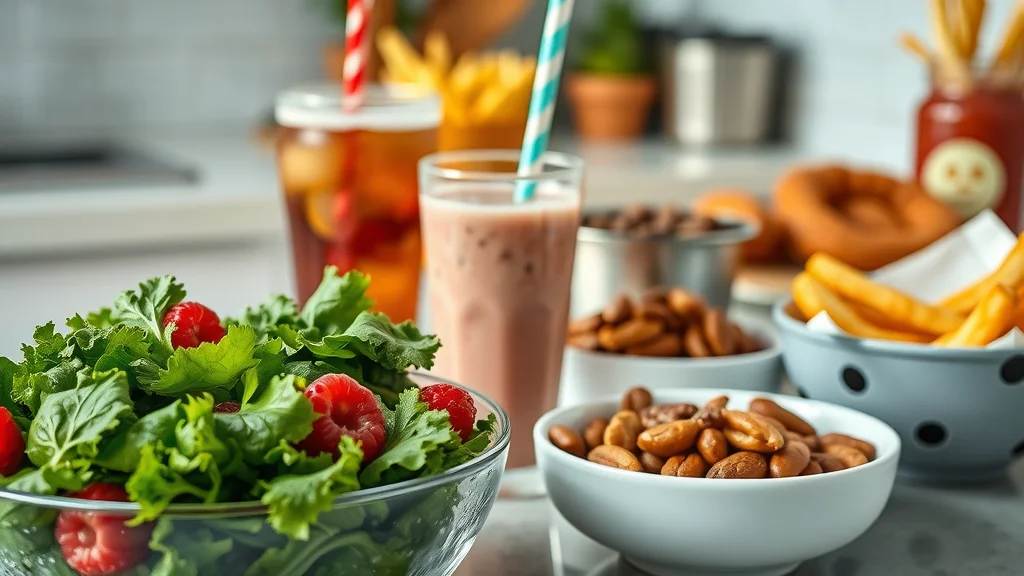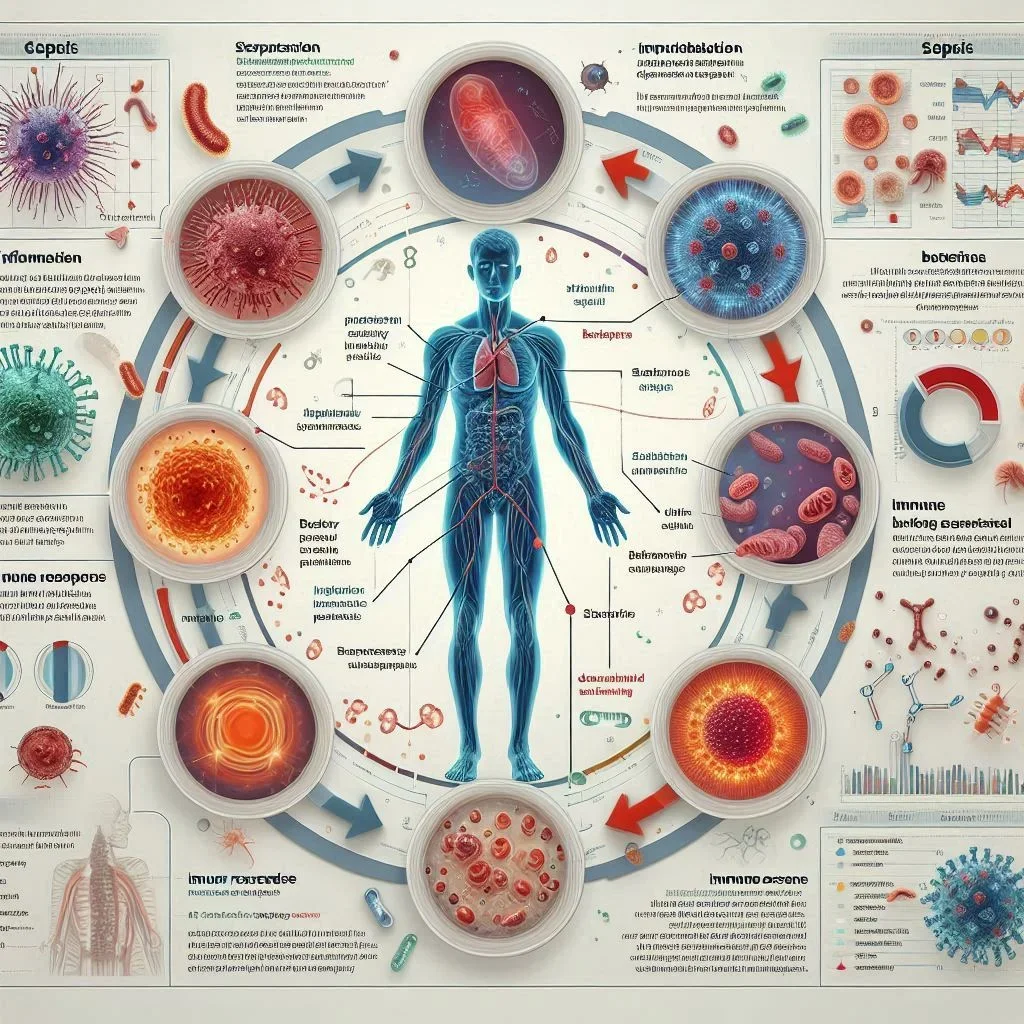Did you know that nearly 1 in 3 adults has insulin resistance, often without symptoms? Understanding how to reverse this condition can prevent diabetes, reduce risk of heart disease, and boost your health.

This guide breaks down everything you need to know about insulin resistance: from understanding what it is and how it sneaks up silently, to practical steps you can take today. If you’re ready to reclaim your health, understanding—and reversing—insulin resistance might be your most important move yet.
What You'll Learn About Insulin Resistance and How to Reverse It
The definition and causes of insulin resistance
Key warning signs and symptoms of insulin resistance
How to identify risk factors and get a blood test to check insulin levels
Evidence-based strategies to reverse insulin resistance
Practical lifestyle, diet, and exercise tips
FAQs and expert quotes for further insights

Understanding Insulin Resistance: Why It Matters
"Insulin resistance is often silent—acting early can make all the difference for long-term health." — Dr. J. Miller, Endocrinologist
Insulin resistance flies under the radar, often developing without obvious symptoms until it contributes to serious health problems like prediabetes, type 2 diabetes, and heart disease. This condition means your body isn’t responding to insulin as it should, causing your blood glucose (sugar) levels to rise higher than normal. The result? Extra work for your pancreas, which pumps out even more insulin, all while your cells resist its effects. If left unchecked, insulin resistance can snowball, leading to more severe health consequences over time.
The good news is that insulin resistance isn’t a life sentence. By recognizing risk factors early and making targeted lifestyle changes, you can actually reverse insulin resistance and reclaim your health before things progress. Whether you've just found out you have high blood sugar, or you're curious about prevention, understanding the mechanics of insulin resistance arms you with the tools to act decisively and protect your well-being.

What is Insulin Resistance?
Insulin resistance is when your body’s cells—particularly in muscles, fat, and the liver—become less responsive to insulin, the hormone that ferries glucose out of your bloodstream and into your cells for energy. Think of insulin as a key unlocking the doors of your cells. When you’re insulin resistant, the lock on the door is jammed, and glucose can’t get in as efficiently. This causes higher blood sugar levels and prompts your pancreas to release even more insulin, often leading to a vicious cycle.
Over time, elevated insulin and glucose levels (also called blood sugar) can damage blood vessels and organs. If ignored, insulin resistance sets the stage for metabolic syndrome, weight gain, prediabetes, and eventually type 2 diabetes. The positive twist? This condition is largely reversible, especially when you address underlying lifestyle factors—such as diet, physical inactivity, and chronic stress—that contribute to insulin resistance.

The Science: How Does Insulin Resistance Develop?
The Role of Glucose Tolerance and Blood Sugar
Glucose tolerance is your body’s ability to manage sugar after eating or drinking carbohydrates. If you have normal glucose tolerance, your blood sugar spikes only briefly and then returns to baseline as insulin does its job. In insulin resistance, however, your blood sugar levels stay higher for longer, as your cells don’t respond to insulin’s signal. This forces your pancreas to release more insulin to clear blood glucose out of the system, eventually exhausting the organ and impairing your body’s ability to control blood sugar—leading to higher fasting glucose levels and, sometimes, prediabetes or type 2 diabetes.
Repeated spikes in blood sugar and insulin—caused by high-sugar diets, stress, inactivity, or lack of sleep—increase the likelihood of developing insulin resistance. Over time, this can damage blood vessels, nerves, and organs, and it significantly raises your risk factors for other metabolic diseases. Recognizing these risk factors early and improving glucose tolerance through targeted interventions is essential to reverse insulin resistance before serious complications arise.
For a deeper dive into the underlying mechanisms and day-to-day impacts of insulin resistance, you might find it helpful to review this comprehensive overview of insulin resistance and its practical implications. It offers additional clarity on how this condition develops and what you can do to address it early.
Hormones, Cells, and Risk Factors
Multiple hormones—not just insulin—help regulate your blood glucose levels. Cortisol (the stress hormone) and glucagon also affect how your body processes sugar. When you are under chronic stress or have disrupted sleep, your body produces more cortisol, which can increase insulin resistance and blood sugar. Genetics play a role too: if you have a family history of diabetes or metabolic syndrome, you may be inherently more at risk. Lifestyle factors, like being sedentary, carrying extra weight (especially around your waist), or eating high-sugar, processed foods, also increase your likelihood of developing insulin resistance.
The way your cells respond to insulin is influenced both by inherited traits and environmental factors you can control. Taking action to improve your diet, exercise habits, manage stress, and sleep can greatly increase insulin sensitivity and reduce your risk of developing long-term complications. Understanding your unique risk factors and monitoring your insulin level gives you the power to prevent—and reverse—insulin resistance.
Common Risk Factors for Insulin Resistance |
|
Risk Factor |
Description |
|---|---|
Age |
Risk increases as you get older, especially after age 45. |
Inactivity |
Lack of regular physical activity lowers insulin sensitivity. |
Obesity |
Excess weight, especially around the waist, raises your risk. |
Genetics / Family History |
Having close relatives with diabetes increases your risk. |
Unhealthy Diet |
High intake of sugary foods, refined carbs, and saturated fats contributes to resistance. |
Chronic Stress |
Elevates hormones that interfere with insulin’s action. |
Poor Sleep |
Insufficient or poor-quality sleep increases risk. |
Polycystic Ovary Syndrome (PCOS) |
PCOS is a known contributor to insulin resistance in women. |
How to Recognize the Signs of Insulin Resistance
What are the Signs of Insulin Resistance?
The warning signs of insulin resistance are often subtle—sometimes so much so that they go unnoticed until a blood test reveals elevated glucose or insulin levels. Early clues often include feeling tired after meals, increased cravings for sweets or carbs, difficulty losing weight (or unexplained weight gain), and brain fog. Some people notice increased belly fat or dark, velvety patches of skin (called acanthosis nigricans), especially on the neck or armpits. Additionally, you may notice frequent thirst, frequent urination, or tingling in the hands and feet. Recognizing these signs gives you a head start in seeking medical advice and reversing the trend before more serious issues—like type 2 diabetes—develop.
Unusual fatigue, especially after eating
Cravings for sweets or carbs
Frequent hunger (even after meals)
Weight gain, especially around the midsection
Difficulty losing weight
Increased thirst or urination
Darkened skin patches, especially on the neck or armpits
Brain fog or trouble concentrating
Tingling sensations in hands or feet

Diagnosing Insulin Resistance: Blood Test and Insulin Level Check
The Importance of Blood Test for Insulin Resistance
The only definitive method to diagnose insulin resistance is through a blood test that measures your insulin level and glucose tolerance. Doctors often use fasting glucose, insulin levels, or more specialized measurements like the HOMA-IR (Homeostasis Model Assessment of Insulin Resistance) or an oral glucose tolerance test. These tests gauge how your body handles sugar and can spot early rises in blood sugar or insulin before you develop type 2 diabetes.
Preparing for a blood test is straightforward, but following certain steps helps ensure accurate results. Most tests require fasting for 8–12 hours before blood is drawn. Understanding your numbers—including blood glucose, blood sugar levels, and insulin—is critical for making informed health decisions. Discuss your blood test results with a healthcare provider for tailored advice and next steps on how to reverse insulin resistance effectively.
Check with your doctor for specific pre-test instructions
Fast for 8-12 hours before your appointment—water is okay
Avoid strenuous exercise the day before testing
Bring a list of any medications or supplements
Inform your doctor of any recent illnesses or unusual stress
Watch this: insulin resistance video from The Mayo Clinic.
Risk Factors: What Puts You at Risk of Insulin Resistance?
Being overweight or obese, especially with central (abdominal) weight gain
Leading a sedentary lifestyle with minimal physical activity
Consuming a high-sugar, highly processed or fast-food diet
Having a family history of type 2 diabetes or metabolic syndrome
Chronic stress and poor sleep patterns
Ethnicity (increased risk for African American, Hispanic/Latino, Native American, and Asian American populations)
High blood pressure, elevated triglycerides, or low HDL (“good” cholesterol)
Conditions like PCOS in women
Aging—risk increases after age 45
"Know your risk, act early: prevention starts with awareness." — Dr. Emily Tran

Why Reversing Insulin Resistance Matters: Health Benefits and Risks
Successfully reversing insulin resistance through lifestyle changes and medical support offers major health rewards. Boosting insulin sensitivity can lead to sustainable weight loss, better blood sugar control, and reduced risk of developing prediabetes or type 2 diabetes. Additional benefits include improved blood pressure, lower cholesterol, increased energy, and lower inflammation throughout your body. On the flip side, uncontrolled insulin resistance increases your risk for heart disease, stroke, nerve damage, vision loss, and other complications.
Reduces your risk for type 2 diabetes, heart disease, and stroke
Facilitates healthy weight loss and management
Lowers high blood sugar and A1C levels
Improves cholesterol and blood pressure
Decreases inflammation, fatigue, and risk of other chronic diseases
How to Reverse Insulin Resistance: Evidence-Based Strategies
Reverse Insulin Resistance with Diet – What Foods to Prioritize
A balanced diet is crucial in strategies to reverse insulin resistance and improve glucose tolerance. The most effective plans emphasize whole, nutrient-rich foods: vegetables, fruits (especially berries), lean proteins (like chicken, fish, beans), good fats (olive oil, avocado, nuts), and plenty of fiber-rich whole grains. Limit refined sugars, white bread, sweetened drinks, and processed snacks that spike blood sugar levels and contribute to insulin resistance. Instead, reach for slow-digesting carbs such as quinoa or steel-cut oats to support healthy blood sugar and insulin responses.
Portion control and meal timing also help improve insulin sensitivity. Eating smaller, balanced meals throughout the day stabilizes glucose and reduces the strain on your insulin response. Don’t be afraid of healthy fats—they’re essential for feeling full and support the action of insulin. Before making drastic dietary changes, consult with a registered dietitian or healthcare provider with expertise in glucose tolerance and blood sugar management.
Sample Foods: Best and Worst Choices for Insulin Resistance
Best Choices |
Foods to Limit/Avoid |
|---|---|
Leafy greens, broccoli, berries, nuts, seeds, lentils, whole grains, fish, olive oil, avocados, Greek yogurt |
White bread, pastries, sugary drinks, fried foods, processed snacks, sweetened cereals, full-fat dairy, fatty meats |

Exercise: The Power of Physical Activity
Regular physical activity is one of the most effective ways to boost insulin sensitivity, improve glucose tolerance, and reverse insulin resistance. Regular physical activity helps your muscles take in more glucose—even without insulin’s help. Aim for at least 150 minutes of moderate activity per week (think brisk walking, cycling, swimming), or about 30 minutes most days. Both aerobic exercise and resistance (strength) training are effective. Even short bursts of movement, like standing up or taking walking breaks throughout your day, make a measurable difference.
If you’re new to exercise, start slowly and focus on developing a consistent habit. Those who combine activity with better nutrition see greater improvements in glucose levels and insulin resistance than those who change diet alone. Don’t underestimate the motivational power of fitness apps or trackers to help measure your progress and celebrate every milestone toward better insulin sensitivity.
Stress Management and Quality Sleep
Chronic stress and lack of sleep can sabotage your efforts to reverse insulin resistance. That’s because high cortisol levels (from stress) cause your body to release glucose into the bloodstream, raising blood sugar and making your cells more insulin resistant. Creating routines for relaxation—like mindfulness meditation, gentle yoga, or even regular walks outside—can significantly reduce stress hormones.
Prioritizing quality sleep—aim for 7–9 hours nightly—improves hormone balance and helps regulate glucose and insulin levels. Block out blue light before bed, avoid late meals, and create a calming bedtime ritual to boost your sleep quality. If you struggle with chronic insomnia, consult with your healthcare provider for tailored solutions.

Watch: Expert video on top exercise and lifestyle routines shown to reverse insulin resistance (video not included in HTML).
Medication & Advanced Medical Support
For those at high risk or with more advanced insulin resistance, medication can be an important piece of the puzzle. Doctors may prescribe drugs like metformin to lower blood sugar or recommend other therapies based on your specific health needs. It’s important to understand that medication works best when paired with lifestyle changes—diet, exercise, sleep, and stress reduction. Strong partnership with your healthcare team can help you reverse insulin resistance and keep blood glucose levels in a healthy range.
Never self-prescribe medications. Instead, seek out professional medical advice to assess whether advanced support is necessary, especially if you have a family history of diabetes, persistent high blood sugar, or signs of metabolic syndrome. With guidance, you can build a safe and sustainable plan for long-lasting change.
Reverse Insulin Resistance: Tips, Tools, and Real-Life Success Stories
Start with one or two healthy eating swaps—replace white bread with whole grain, or swap a soda for sparkling water.
Set a regular walking routine—aim for 15 minutes after each meal to help regulate blood sugar.
Track your glucose levels with apps like MyFitnessPal or a glucose monitor, and keep a simple food journal.
Pair up with a friend or support group for encouragement and accountability.
Celebrate small milestones—each choice builds up your momentum to reverse insulin resistance!
Success Story: Sarah, a 38-year-old teacher, noticed unexplained fatigue and stubborn weight gain. After her doctor discovered rising blood sugar and diagnosed insulin resistance, Sarah started walking daily, traded fast food for home-cooked meals, and improved her sleep schedule. Within six months, she lost 20 pounds, normalized her sugar levels, and feels energized like never before—proof that small, sustainable changes turn insulin resistance around.
Recommended tools: Glucose monitors (such as Freestyle Libre), meal planning apps (e.g., PlateJoy), and fitness trackers (Fitbit, Apple Watch) to keep you inspired and accountable on your reversed insulin resistance journey.
"Small changes, maintained over time, can change your future diagnosis." — Registered NC Dietitian

People Also Ask: Expert Answers to Your Top Questions on Insulin Resistance
How do you fix insulin resistance?
Fixing insulin resistance involves improving your body's insulin sensitivity by addressing key risk factors and monitoring your insulin level through regular blood tests. Start by eating more fiber-rich veggies and whole foods, cutting processed sugars, and moving daily (like walking or cycling). Managing stress, sleeping well, and losing extra weight—especially belly fat—dramatically increases insulin sensitivity. In some cases, medication may help, but lifestyle change remains the most powerful tool for most people.

What are the signs of insulin resistance?
Signs of insulin resistance include unusual fatigue after meals, frequent cravings for sweets or carbs, unexplained weight gain, stubborn belly fat, and sometimes dark, velvety skin patches (especially on the neck). Other indicators are increased thirst, more frequent urination, tingling in hands or feet, and brain fog. If you notice these symptoms, talk to your doctor about getting a blood test for blood sugar and insulin levels.
What foods increase insulin resistance?
Foods that increase insulin resistance include those high in added sugars, refined carbs (like white bread and pastries), sweetened beverages, fried foods, and heavily processed snacks. These foods spike your blood sugar levels and force your pancreas to produce more insulin. Over time, excess intake weakens your body’s insulin response. Opt for fresh, whole foods and limit sugary or processed items to reverse insulin resistance.
How to lose weight if you are insulin resistant?
To lose weight with insulin resistance, focus on stable blood sugar by eating meals rich in fiber, lean protein, and healthy fats. Avoid sugary drinks and processed carbs, keep active with regular walks or strength training, and prioritize sleep. Tracking your food intake and progress helps too. Even modest weight loss (5-10% of your body weight) can significantly improve insulin sensitivity and reduce future health risks.

Insulin Resistance FAQs
What is the difference between insulin resistance and type 2 diabetes?
Insulin resistance is a stage where your body requires more insulin to move sugar into cells. Type 2 diabetes develops when your pancreas can’t keep up, causing chronically high blood sugar.How often should you test insulin level if you are at risk?
People at risk should test their fasting glucose or insulin levels at least once a year, or more often as advised by a healthcare professional.Can children develop insulin resistance?
Yes, with rising obesity and sedentary habits, children can develop insulin resistance, so healthy habits and regular check-ups are key.Are there supplements proven to help reverse insulin resistance?
Some evidence suggests supplements like magnesium, omega-3s, and vitamin D can support insulin sensitivity, but they work best alongside diet and lifestyle changes.Can insulin resistance be completely reversed?
For many, yes—especially if caught early and paired with sustained lifestyle changes. However, genetics and long-term damage may mean continued management for some.

Key Takeaways for Reversing Insulin Resistance
Early detection of insulin resistance is critical
Lifestyle changes provide the strongest defense against insulin resistance
Medical guidance can amplify your success
Start Reversing Insulin Resistance Today
Ready to take action? Small, consistent changes—healthy food, daily movement, and stress management—can transform your health and reverse insulin resistance. Begin with one healthy habit today!
If you’re inspired to take your wellness journey even further, consider exploring how holistic and naturopathic strategies can complement your efforts to reverse insulin resistance. By broadening your approach to include natural therapies and whole-person care, you may uncover new ways to support your body’s healing and resilience. Discover a range of integrative solutions and expert insights in this guide to naturopathic approaches for common health concerns. Expanding your knowledge can empower you to make more informed, personalized choices for lifelong health. Your next step could be the key to unlocking even greater vitality and balance.
Sources
CDC – https://www.cdc.gov/diabetes/basics/insulin-resistance.html
Healthline – https://www.healthline.com/health/insulin-resistance
American Diabetes Association – https://www.diabetes.org/diabetes/insulin-resistance
Insulin resistance is a condition where the body’s cells become less responsive to insulin, leading to elevated blood sugar levels. This can increase the risk of developing type 2 diabetes and other health issues. Understanding and addressing insulin resistance is crucial for maintaining overall health.
For a comprehensive overview of insulin resistance, including its causes, symptoms, and treatment options, you can refer to the Cleveland Clinic’s article titled “Insulin Resistance: What It Is, Causes, Symptoms & Treatment.” This resource provides detailed information on how insulin resistance develops and strategies for management.
Additionally, the Centers for Disease Control and Prevention (CDC) offers valuable insights in their article “About Insulin Resistance and Type 2 Diabetes.” This resource explains the relationship between insulin resistance and type 2 diabetes, highlighting preventive measures and lifestyle changes that can help reverse insulin resistance.
If you’re serious about understanding and managing insulin resistance, these resources will provide you with the necessary information and strategies to take control of your health.
 Add Row
Add Row  Add
Add 




Write A Comment